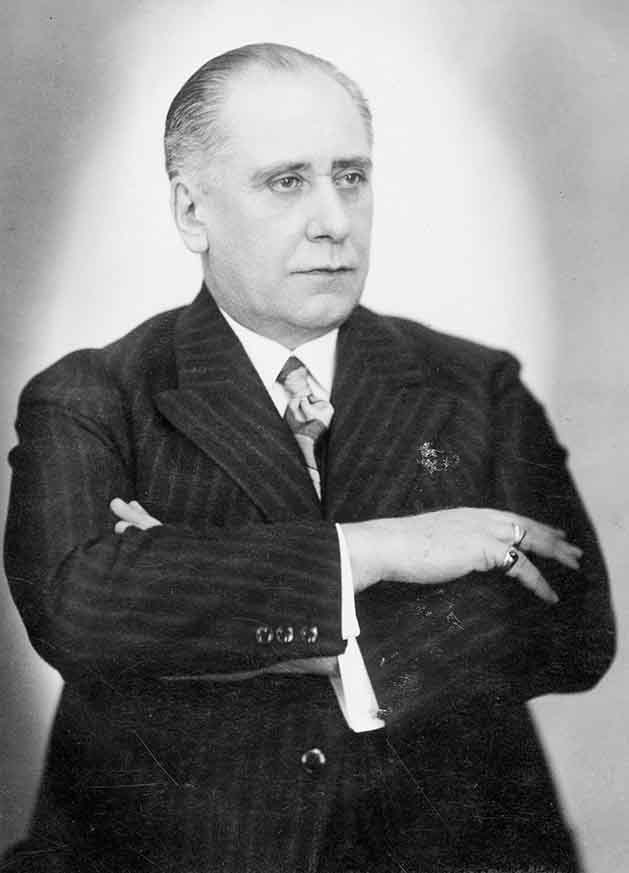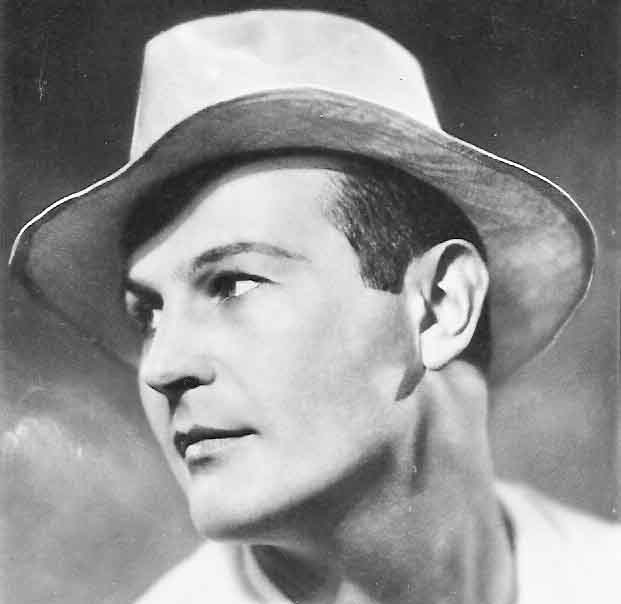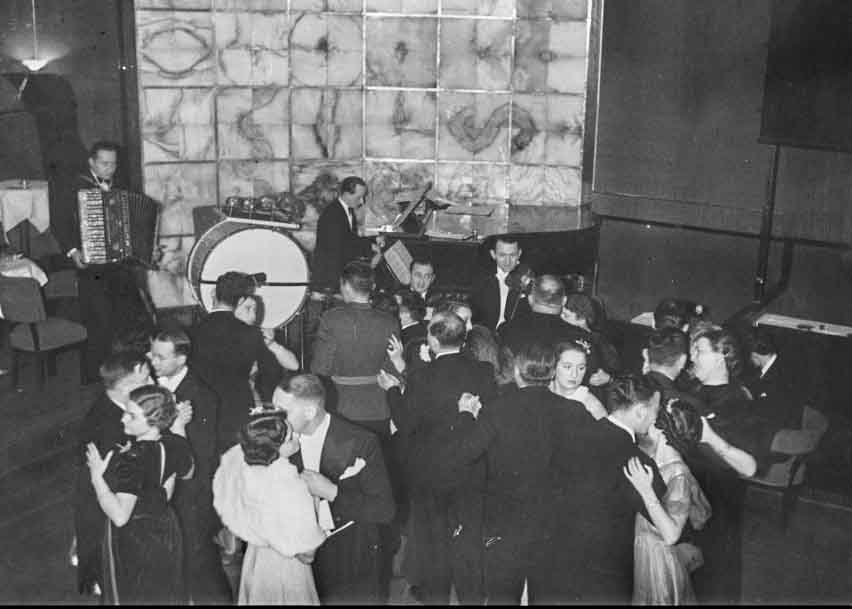Egypt with its ancient monuments is one of the treasures of the world. At the end of the 18th century, the first European attempts to commercially penetrate this region began. At that time, Egypt was formally under the rule of the Ottoman Empire (Turkey), but in fact, it was ruled by the local Mamluks, descended from former slaves.
Egypt in the 17th and 19th centuries
The Turkish Pashas signed agreements with the English in 1775 and with France in 1785, on the basis of which the ships of these countries could navigate in the waters previously inaccessible to them. This initially peaceful exploitation of new sea routes by the Franks, as the Arabs called all foreigners, quickly turned into an armed attack.
In 1798 Napoleon Bonaparte defeated the Mamluks in the Battle of the Pyramids. The purpose of his invasion was to ensure France's contact with the Indian sultan Maysur, who fought the British on the west coast of the subcontinent. The French also expected its lavish Parisian government in a desperate need of cash to be saved by Egypt.
Ultimately, the campaign failed, and in 1801, Bonaparte fled to France in a small boat, abandoning his army. The Ottoman power in Egypt collapsed and this was taken advantage of by Macedonian-born Muhammad Ali Pasha (1769-1848), who was a great reformer and wanted to change Egypt to a European model.
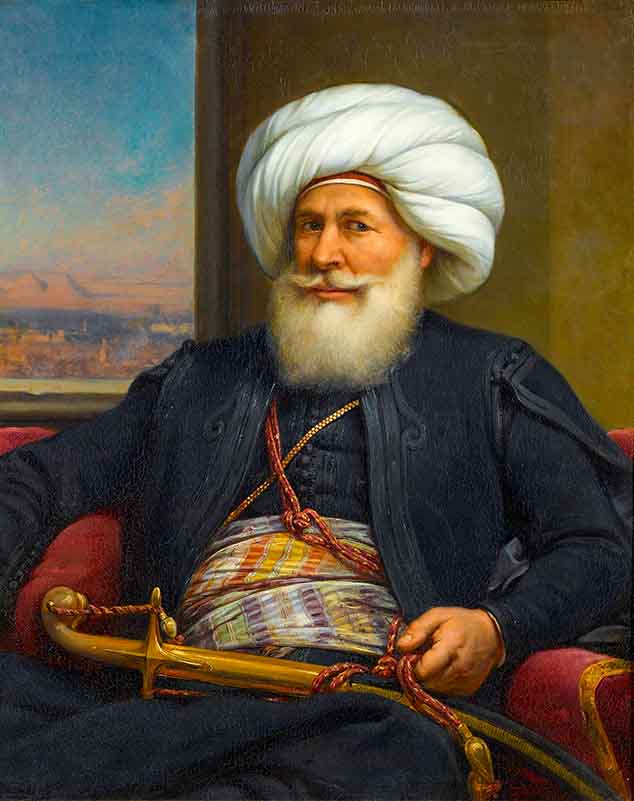
Muhammad Ali Pasha, oil portrait of Auguste Couder (Source: Wikipedia)
The mistake of his policy was to bet the entire economy of the country on militarization. He carried out numerous military campaigns. Egyptian troops even threatened Istanbul itself, and the Ottomans were saved in 1840 only by the intervention of the European powers. International treaties forced Egypt to reduce its army from 300,000 to 18,000.
Widely adopted modernization of the state, subsequent financial and technological support from France and Great Britain, resulted in enormous indebtedness of the country and dependence on the colonial powers. An additional gigantic loan taken to dig the Suez Canal led to a bankruptcy in 1875. A public debt committee, comprising only Europeans, was created. Its task was to control Egypt's financial policy. It was, in fact, depriving Egypt of its sovereignty. Egypt became a private plot for the British and remained so until 1918. The country was relentlessly exploited.
After Napoleon's campaign, many illustrated publications were issued and Europe became fascinated with ancient Egypt. In the years 1809-1818, 23 volumes of the book Opis Egiptu (Description de l'Egypte) were published.
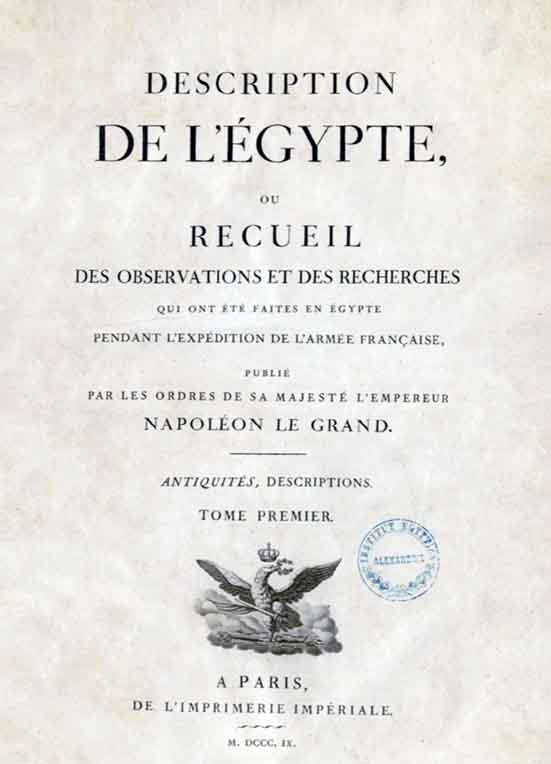
The title page of the "Description of Egypt" (Source: US Library of Congress)
In 1822, Jean Francois Champollion deciphered the hieroglyphic script and paved the way for the emergence of the science of Egyptology. Waves of foreigners began to arrive on the Nile, and the rule of Muhammad Ali Pasha ensured their safety and a privileged position. Special consuls looked after the interests of the English, French, Germans and Austrians. Europeans were not subject to the Egyptian justice system, but to the consular courts of their countries.

Fragment of Champollion's work showing hieroglyphs (Source: Wikipedia)
In the first half of the 19th century, they were given complete freedom to conduct their own excavations. The only limitation on what they could take away was the carrying capacity of the boats on which they sailed the Nile. Hundreds of thousands of priceless monuments, such as giant pylons, obelisks, statues, beautiful sarcophagi, sailed to various parts of the world. The mummies were ruthlessly ripped from their burial place and placed in remote museums and private collections to "please the eyes" of curious people of other cultures.
In 1869, guests from all over the world came to the opening of the Suez Canal. In 1870, the first bridge over the Nile was commissioned.

Opening of the Suez Canal in 1869, illustration from the Russian book of 1901 (Source: Wikipedia)
Egyptian style in architecture became one of the forms of fascination with ancient Egypt. In the 1820s, houses, villas, bridges, parks, prisons, museums, galleries and synagogues were built all over Europe based on ancient Egyptian patterns. It was in this style that the so-called Egyptian Hall at Piccadilly Circus, London. It was erected at the behest of the British jeweler and speculator William Bullock, who decided to keep his military collection and Egyptian mummies there.
Masonic lodges around the world were also built in the Egyptian style, and the most impressive are in Boston and Philadelphia. Buildings in the style of ancient Egypt were also built in Poland. Examples include mausoleums in the shape of pyramids in Piotrowice and Międzybrodzie and the orangery in the Małachowskie estate in Końskie.
Egypt, which was modernizing in the 19th century, attracted Europeans, including Poles. There were three main reasons why they came to the Nile: Christian pilgrimages to the Holy Land, the growing tourist movement, and the discovery by European health practitioners of the properties of the Egyptian climate and bathing in mineral springs.
Egypt itself offered several places of religious significance mainly related to the escape of the holy family from Herod described in the Gospels: Mount Sinai, or the tree of Mary in the suburbs of Cairo.
Egypt and the Poles
Prince Mikołaj Krzysztof Radziwiłł, known as the Orphan, set off in 1583 to visit the tomb of Christ, stopping in Egypt on his way. Thanks to him, the first description of the Giza pyramids in Polish literature was created.
On the right bank of the Nile lies the town of Helwan, which today belongs to the suburbs of Cairo. Patients from Europe, Turkey and America came here to improve their health. In its heyday, the town was teeming with life. There were luxury hotels, baths, theaters, horse races, and gambling venues. There were beautiful villas and palaces where the Egyptian elite lived.
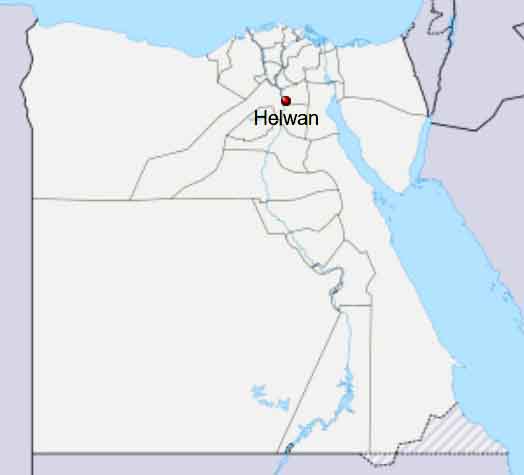
The location of Helwan on the map of Egypt (Source: Wikipedia)
During the construction of the first baths at the end of the 19th century, the remains of bath facilities from the 7th century were discovered. The most important spa facilities were built in 1892 and it was then that the resort flourished. The dry climate and numerous brine springs, sulphurous and ferruginous waters, which reached a temperature of 33° C, successfully treated patients. These springs had the same chemical composition as the fashionable waters of Aix-les-Bains, France. Rheumatism, kidneys and lung diseases were treated here.
Two guesthouses were established by Poles in Helwan. They were Villa (Willa) "Wanda" and Resort (Pensjonat) „Jola”. While being medicinal resorts, they also constituted important centers of Polish identity on the Nile. Many eminent figures visited their rooms.
Spa-Resort Villa "Wanda"
The family of Wanda née Bobrowska and Juliusz Biliński, with their daughter Zofia, first came to Helwan in 1898. Juliusz had a kidney disease and the family spent winters in Egypt. After some time, they bought a plot of land there. Unfortunately, Juliusz died in September 1901.
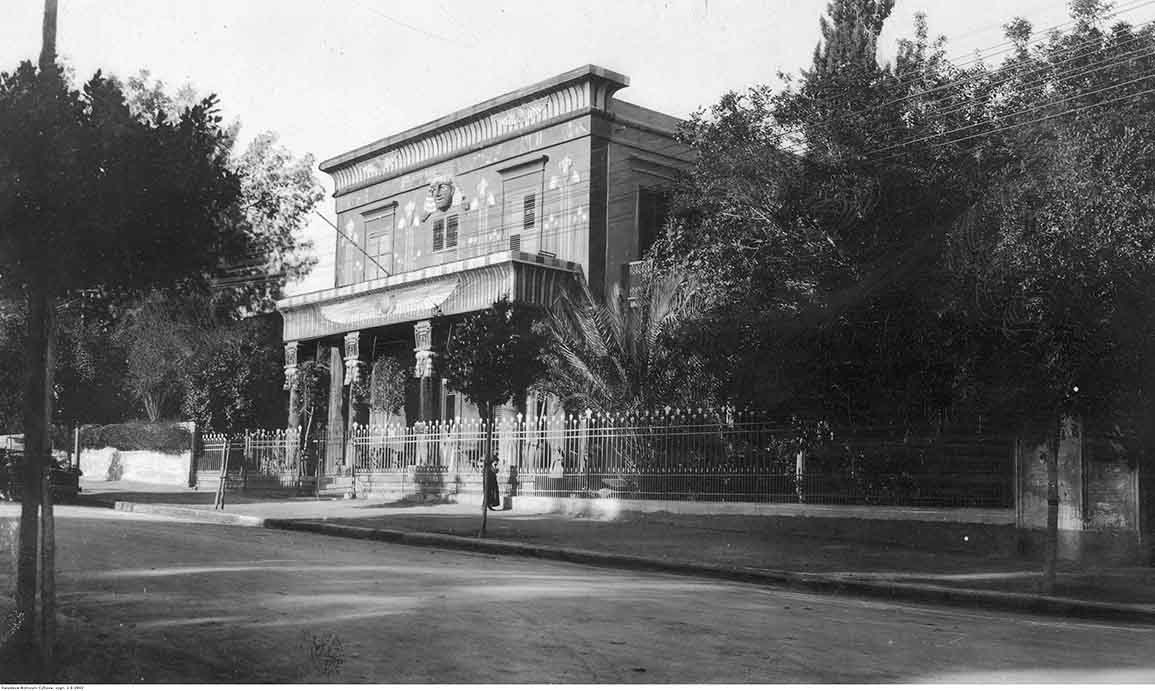
Villa "Wanda" in Helwan (Source: National Digital Archives)
Villa "Wanda" was probably founded in 1900 and existed until around 1931. Offers advertising this guesthouse were published, among others, in magazines such as Sfinks and Kuryer Litewski, as well as in the tourist guide of Karol Baedeker. The guesthouse was located in a residential area in the southern part of Helwan, at the intersection of the streets bearing the names of Pasha Mansur and Berhana, in close proximity to the main baths and close to the train station where Wanda's porter was always waiting for guests.
In 1906 it was written about, that Willa Wanda was overcrowded and that it was prospering.
In 1909, Wanda enlarged her property by purchasing adjacent plots of land. Thus, her guesthouse became one of the most prominent health resorts in Helwan. The villa offered 60 guest rooms and a beautiful garden. In 1910, it was again expanded and decorated. A new annex was built with a beautiful Egyptian-style facade and a portico supported by four columns.
From May to the end of September, Wanda spent her holidays in Europe, mainly in Podolia, Warsaw, Vienna, Marienbad and Budapest. She leased a garden near Nałęczów and took up gardening. It was there that she made friends with Aleksander Głowacki, known as Bolesław Prus (a well-known Polish writer).
Guests arrived mainly during the season which lasted from mid-October to the end of May. Bathing in the world-famous sulfur springs helped in the treatment of kidney diseases. The climate favored the treatment of, among others, rheumatic diseases. At the beginning of April, the desert wind Hamsin began to blow and those who had lung disease had to return to Europe.
Patients were offered diets tailored to their ailments. The cleanliness was well taken care of and the rooms were disinfected after the departure of the guests, and the whole guesthouse was renovated once a year. As entertainment, excursions to the desert as well as to explore antiquities and the city were offered to guests. The prices for the villa were high, but it offered visitors an exceptionally high standard of service.

Advertising announcement from the pre-war press (Source: Twitter)
Most of the guests were Poles, who came mainly from the middle-class nobility and the intelligentsia. The journey from Poland was quite complicated. Travelers had to reach one of the cities of southern Europe, from where they sailed on board a steamboat, most often by Cook or Lloyd's lines, to Alexandria. The boat trip took three-and-a-half days. Already in Alexandria, the guests were greeted by Wanda's envoy, on whose cap the inscription "Willa Wanda" was embroidered. They traveled by Egyptian railroad to Cairo, and from there, by suburban railroad to Helwan.
The war years 1914-1918 brought many losses to the guesthouse due to the lack of guests. Wanda was forced to sell the house. Since then, she was only leasing one building, but the guesthouse continued to prosper for some time. Wanda always emphasized the Polishness of her guesthouse from the balcony on which the Polish flag waved.
The Poles living on the Nile formed the Voluntary Tax Association, based in Cairo. It supported Poles in Egypt affected by the war and carried out activities popularizing Polish history and culture.
Wanda Bilińska died on July 17, 1931 in Helwan at the age of 65.
The buildings of the guesthouse no longer exist, and in their place, on El-Sohda Square, there is a large shop by Omar Effendi (as of 2015).
Resort "Jola"
The "Jola" guesthouse was opened in 1929 or in 1930 by Bogdan Richter and existed at least until the outbreak of the Second World War. It was named after his daughter.
Bogdan Richter graduated from the University of Warsaw, where he later worked as a lecturer in oriental languages - Chinese and Japanese. He spent the First World War in the Caucasus and then traveled a lot around the world. In the years 1929-33 he visited Egypt and Nubia in depth, being a correspondent of Gazeta Polska. At that time, he decided to permanently settle with his family in Egypt.
The villa was actually a palace built on a large plot of land by the Egyptian wealthy Shauk Pasha. From the front, elegant stairs guarded by stone lions led to the entrance. The palace probably stood in the northern part of Helwan on Isma'ila Street. The villa was divided into two parts: a selamlik for men, and a haremlik for women. The roof, as in Villa Wanda, served as a relaxation terrace. The roof overlooked the Giza Pyramids in the distance.
The garden was admired by everyone and was kept sparing no expense. There were local plants such as palm trees, but also tamarisks, bougainvillea, jasmine, roses, pansies, asters and cloves, unheard of in Egypt.
Bogdan Richter was an excellent guide, knowledgeable about history. He guided tours of and around Cairo, and escorted groups to Upper Egypt.
At the beginning of 1930, the famous writer Zofia Kossak-Szczucka lived there. However, Willa "Jola" gained the greatest fame after the stay of Marshal Józef Piłsudski, who spent a month there from March 6 to April 6, 1932. Together with him, adjutants Tadeusz Kobylański, Mieczysław Bohdan Lepecki, and the Marshal's doctor Marcin Woyczyński and his wife stayed at the resort.

Piłsudski in Egypt (Source: National Digital Archives)
During his stay, Piłsudski went briefly to visit the pyramids and the Sphinx, but he showed no interest in antiquities. He made a trip to the oasis of Al-Fayum. He was interested in agriculture and the modern life of the inhabitants. He read a lot of the books he brought with him and looked through maps. He also read daily newspapers in French and English. He drank his favorite tea imported from Poland, with biscuits and smoked Marszałkowskie cigarettes. He liked to play cards and chess with Mieczysław Maliński, who was the secretary of the Polish legation.
On March 19, Piłsudski's nameday was celebrated loudly and the Polish flag was hoisted over the building. During his stay in Helwan, Piłsudski paid a courtesy visit to the King of Egypt, Fuwad I, in his Abdine Palace in Cairo. Egyptian Prime Minister Sidki held an audience with the Marshal at Villa "Jola."
On December 22, 1943, Piłsudski's stay in Helwan was commemorated by a plaque with a text in Polish, Arabic and English on the wall of Villa "Jola", which was unveiled by General Władysław Anders.
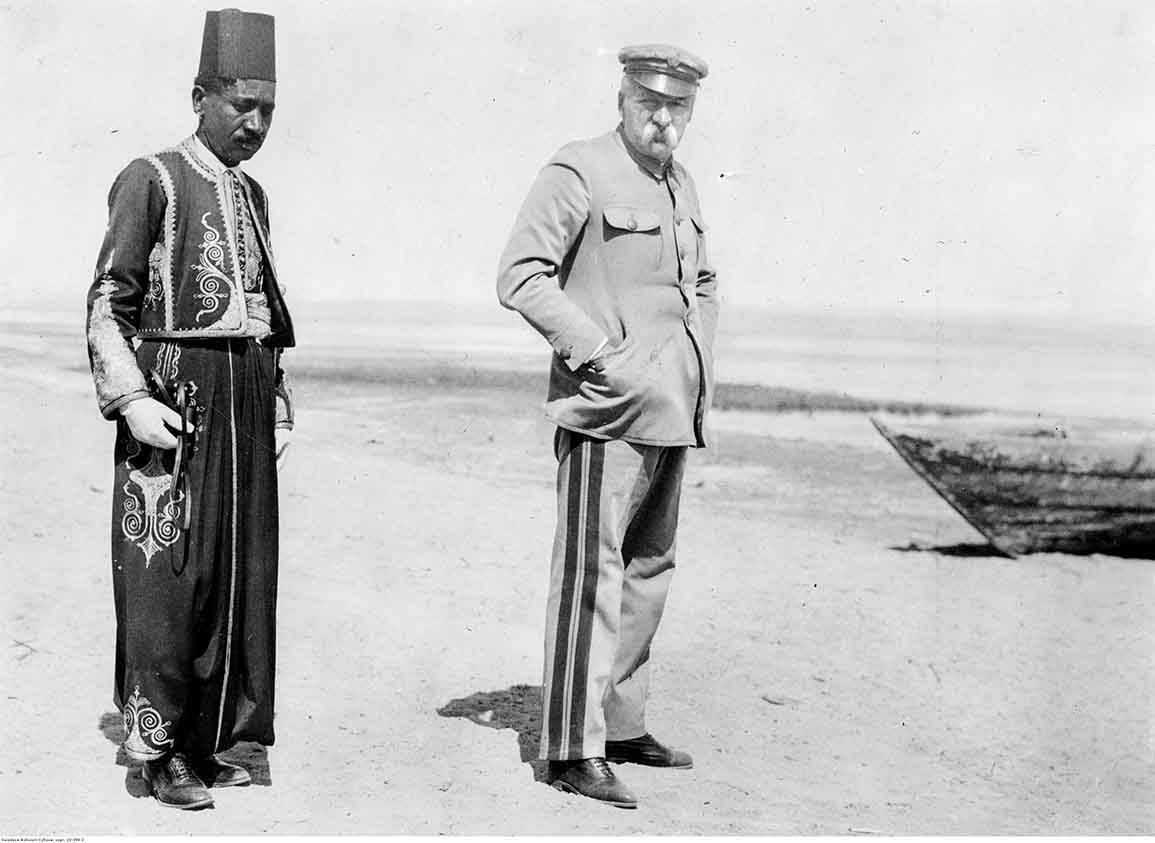
From Marshal Piłsudski's stay in Egypt (Source: National Digital Archives)
In the aftermath of the revolution and the fall of the Egyptian monarchy in 1952, the town of Helwan lost its splendor and visitors stopped coming. In the years 1955-1960, a huge industrial center was erected on the site of the former resort and a steel plant was built. Helwan became an industrial center.
The 20th Century
In 1922, Egypt declared its independence and the period of kings' rule began, which lasted until 1952. In fact, the country still was a dependent of Great Britain.
In 1926, the Second Polish Republic established diplomatic relations with Egypt, and two years later the Polish Legation was opened in Cairo. There were 76 Polish citizens in Egypt at that time. In the interwar period, there was intense trade between the two countries. Poland bought huge amounts of wool from Egypt, while to the Nile it shipped coal, wooden products and textiles. In 1935, a cargo ship sailed from Gdynia towards Alexandria every 10 days.
Poles, fighting on all fronts of the Second World War, also found themselves in Egypt. Polish military personnel and refugees initially interned after crossing the Polish-Romanian or Polish-Hungarian border, as well as people evacuated from the Soviet Union, stayed there. The headquarters of the Polish Army in the East were located in Cairo. There was also the London Government Delegation. Polish junior schools were opened and newspapers in Polish were published, such as the Journal of the Soldier of the Polish Army in the East and the Parade.
General Anders' corps awaited transport to Italy. On the sleeves of thousands of uniforms in Cairo, there was a sign of a [Warsaw] mermaid or a brown bison on a yellow background and the inscription "Poland". Groppi's famous cafe was becoming Polish around five in the afternoon. The newsboys and the Arab servicepeople knew at least a few Polish words.

Cafe Groppi in Cairo in modern times (Source: Wikipedia)
The local Polish community was very active. It helped arriving Poles as well as their compatriots on the Vistula River. The Committee for Aid to War Victims in Poland was established in Port Said. Funds were collected for the needs of the state. In 1943, on the initiative of the Polish Legation, the Polish Charity Society was established, of which Bogdan Richter was a member. In 1956, the Polish Embassy was opened in Cairo.
Egyptology
Poles have written an important page in the history of Egyptian archeology since the times of the genius Professor Kazimierz Michałowski (1901-1981), who began excavations in Edfu in 1936.
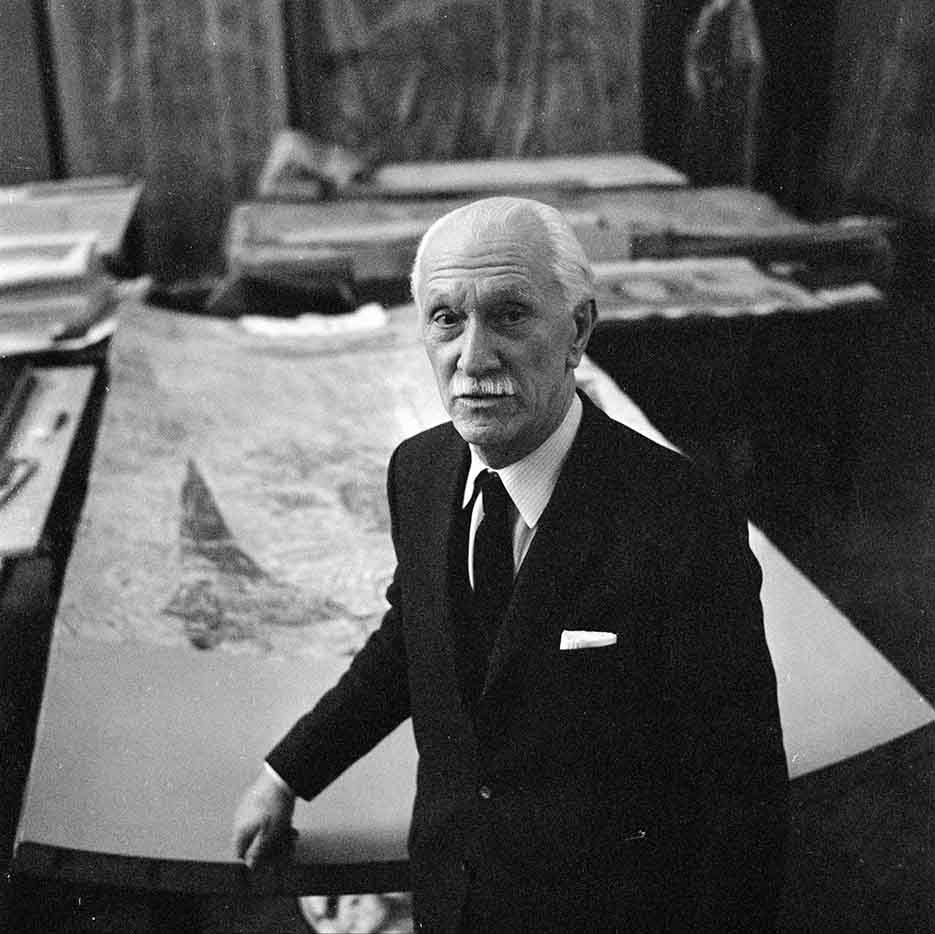
Kazimierz Michałowski (Source: Wikipedia)
He participated in many expeditions, was the chairman of the commission of experts who saved the temple of Pharaoh Ramses II in Abu Simbel from flooding during the construction of the Aswan Dam, when the temple was relocated. Under his leadership, the Polish-Egyptian Friendship Society was established in 1956. In 1959, the Polish station of Mediterranean archeology of the University of Warsaw was established in Cairo. Until today, Polish archaeologists are highly valued in the world.
Translation from Polish by Andrew Woźniewicz.





